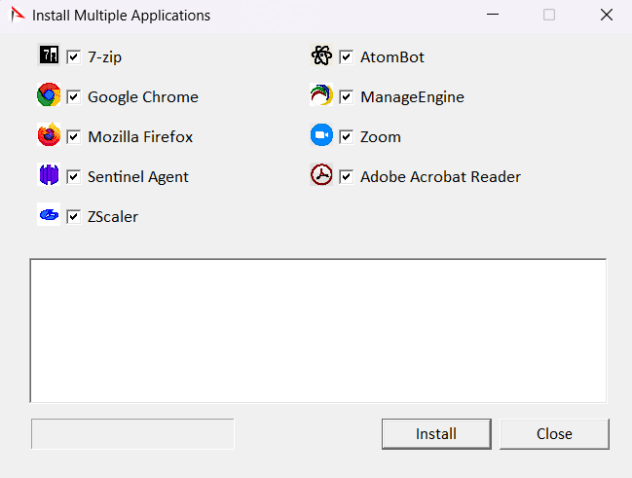For IT admins, onboarding a new employee is rarely “just another task.” It touches every part of the IT stack—endpoint setup, software provisioning, identity management, compliance, and security. Yet in most organizations, this process is still highly manual, inconsistent, and dependent on individual technicians.
During our recent webinar, we showcased how Anakage turns onboarding into a fully automated, predictable, and audit-ready workflow. This post breaks down the real issues IT teams face and how Anakage solves them using agent-based automation.
Contents
- 1 Where Onboarding Breaks Down Today (IT Admin Reality Check)
- 2 1. Bulk Software Deployment + Role-Based Catalogs
- 3 2. Compliance Automation & Baseline Enforcement
- 4 3. Domain Join & Policy Enforcement—Fully Automated
- 5 4. AD, O365 & LDAP Automation – Account & Access Provisioning Made Simple
- 6 5. Tight Integration with HRMS & ITSM
- 7 Key Benefits for IT Admins & CIOs
Where Onboarding Breaks Down Today (IT Admin Reality Check)
Most onboarding delays, misconfigurations, and security gaps happen due to:
- Manual handoffs between HR, IT, and Facilities, causing missed steps and SLA slippages.
- Non-standard installs → wrong software versions, license leakage, inconsistent device state.
- Shared folders/URLs/scripts used informally → insecure and unreliable.
- AD, mailbox, and license provisioning done manually → typos, stale accounts, and access delays.
- Local policies applied manually instead of SCCM/Intune → configuration drift.
- Manual domain join, imaging, and re-join → technician dependency and no visibility.
- Inconsistent enforcement of encryption, patching, AV and other baseline controls.
- Default admin rights because “it’s faster” → high-risk endpoints on Day 1.
- No workflow/SLA tracking → IT can’t prove timelines or accountability.
- Poor asset tracking → weak compliance evidence and device-loss risk.
- How Anakage Automates First-Time Machine Setup
With the Anakage Agent and automation engine, onboarding becomes standardized, fully orchestrated, and trackable end-to-end.
1. Bulk Software Deployment + Role-Based Catalogs
Upload packages once, standardize the exact versions, and deploy in bulk.
Assign role-based repositories—HR gets HR apps, developers get dev tools, etc.
Real-time progress, logs, and error visibility per install make troubleshooting easy.

2. Compliance Automation & Baseline Enforcement
Define what a compliant machine must include: software, versions, registry values, services, policies.
Monitor compliance in real-time across all endpoints.
Automatically fix or flag deviations before the device is handed over.
Capture compliance evidence with screenshots.
3. Domain Join & Policy Enforcement—Fully Automated
Automate domain join, re-join, admin group checks, and policy assignments.
Use your own scripts or Anakage bots for domain migration or remediation scenarios.
Install Anakage Agent right after Windows setup, letting admins run the entire onboarding kit before employee login.
4. AD, O365 & LDAP Automation – Account & Access Provisioning Made Simple
The HR–IT handoff becomes predictable with the HR AD Automation module.
Create, disable, or delete users.
Add/remove from AD groups.
Assign O365 licenses.
Perform bulk operations without scripting.
Configure custom actions for specific organizational needs.
5. Tight Integration with HRMS & ITSM
Auto-generate IT tickets when HR initiates onboarding.
Sync status updates back into HRMS.
Automatically attach compliance proofs to the ticket before closure.
Key Benefits for IT Admins & CIOs
80% less manual effort on repetitive onboarding tasks.
Guaranteed compliance with automated enforcement and audit trails.
Higher security through consistent policy enforcement and restricted admin rights.
Zero guesswork thanks to centralized dashboards and logs.
Fewer tools to manage due to HRMS, ITSM, AD/O365, and device integrations.